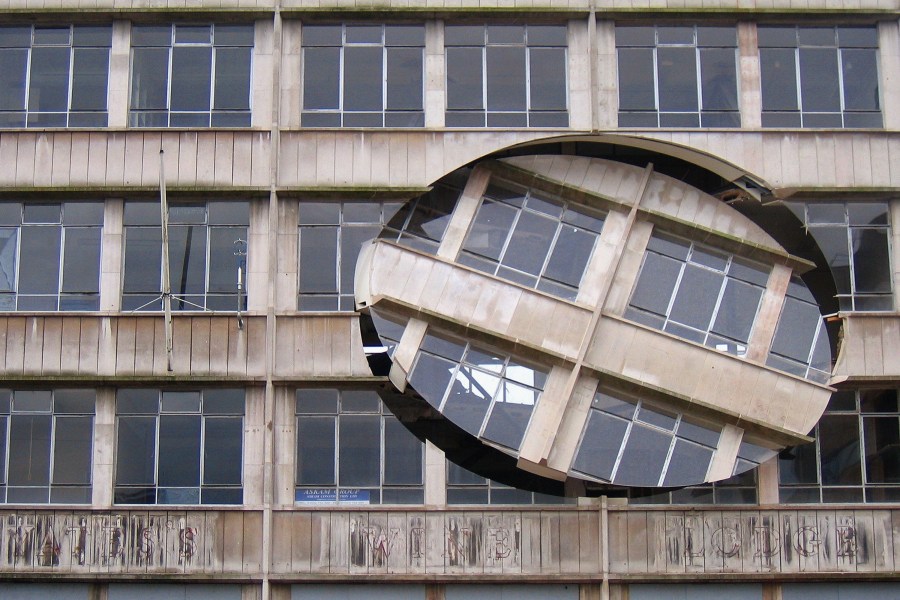A decade has passed since Liverpool spent a year as the European Capital of Culture. Since then, the European Union’s scheme has inspired numerous other regions to create their own ‘City of Culture’ designations. Last year saw cities from Bogra to Turkestan host regional schemes. Designed as city-branding exercises, these projects are, at least in part, intended to draw in lucrative tourism and inward investment to benefit historically under-resourced areas.
Following the UK’s vote to withdraw from the EU, the European Commission decided to void applications from British cities bidding to be the European Capital of Culture in 2023. This development adds a touch of nostalgia to Liverpool 2018, a year-long programme celebrating the ‘renaissance’ the city has experienced in the ten years since its tenure as one of Europe’s chosen cultural capitals. Recent discussions have frequently cited Liverpool’s experience, which included popular and widely reported spectacles such as a parade of the giant Royal de Luxe marionettes, as an example of the success of the scheme. ‘It was never just about 2008,’ current mayor Joe Anderson said, announcing the Liverpool 2018 programme. ‘It was about the legacy that followed.’
Raising the profile of Liverpool’s cultural offer was central to the intended legacy of the programme in 2008, motivating the commission of several spectacular headline works. The Liverpool Biennial, then its fifth edition, commissioned Richard Wilson’s Turning the Place Over, an eight-metre-wide cross-section removed from and then re-attached to the façade of a former office building where it spun on a pivot. Yayoi Kusama created Gleaming Lights of the Souls, a version of her celebrated infinity rooms, and Ai Weiwei’s giant spider-web of lights stretched across Exchange Flags. Liverpool was also the venue for a major exhibition about Gustav Klimt.
Gleaming Lights of the Souls (2008), Yayoi Kusama, at the Liverpool Biennial, International Festival Of Contemporary Art, 2008. Photo: Jim Dyson/Getty Images
Turning the Place Over stopped spinning in 2011. All that’s left is its outline, carved out of the building’s façade – which feels symbolic of the aftermath of the 2008 programme, once the year’s one-off events had come to a close. This leaves Liverpool 2018 relying on thematic links, such as Tate’s upcoming exhibition of Klimt’s compatriot Egon Schiele. The Singh Twins exhibition that is currently at the Walker Art Gallery similarly picks up the thread of the pair’s well-received commissions for the biennial ten years ago.
Other achievements have enjoyed more longevity. The Victoria Gallery and Museum opened in 2008 in the University of Liverpool’s distinctive red-brick clock tower and continues to bring the university’s collections to the public. Launching in July this year, the tenth edition of the Liverpool Biennial maintains the festival’s reputation for bringing international artists, from Francis Alÿs to Agnès Varda, to the city’s streets and galleries. All this, it is hoped, will reaffirm Liverpool as a ‘must-visit destination’.
The programme of Liverpool 2018 continues to celebrate the rebranding of the city. But sporadic high-profile events do not necessary signify the long-term health of a city’s institutions and heritage as they are currently experienced by Liverpool’s residents. Criticism of the 2008 programme noted the volume of international artists, as opposed to a nurturing of local talent. Questions of infrastructure affecting Liverpool’s artists – such as a lack of studio space – have still not been confronted.
By focusing on creating a new, marketable identity for Liverpool, rather than revealing its existing richness, the strategy in 2008 demonstrated its primary orientation towards the future of the city – and towards incoming residents, tourists, and investors. The ‘legacy’ of this approach is now paying dividends in the city in terms of visible investment and urban development – but at what cost to its heritage?
A rendering of how the waterfront might look after the planned Liverpool Waters redevelopment Image: Peel Land and Property
Alongside Machu Picchu and the Great Barrier Reef, Liverpool is recognised as a UNESCO World Heritage Site. The protected site includes the Pier Head and Albert Dock, home to the Museum of Liverpool and Tate Liverpool, and William Brown Street where the Walker Art Gallery and its library sit. In July of last year, plans to develop a district of skyscrapers, office blocks and (potentially) a new stadium for Everton FC on Liverpool’s protected North Docks provoked UNESCO to threaten to rescind its designation. The planned development, known as Liverpool Waters, was deemed to ‘fundamentally adversely affect the Outstanding Universal Value of the property’. The city has been granted a two-year moratorium by UNESCO, but ‘renaissance’-seeker and mayor Joe Anderson is determined to forge ahead with the planned development.
Losing the UNESCO designation may be felt harshly by the cultural institutions that currently enjoy the prestige it lends them, such as Tate, the Walker and Bluecoat. The saga signals that Liverpool’s built heritage, and the institutions that protect it, are being treated primarily as assets to attract investment. The buildings and spaces that bear witness to Liverpool’s social and cultural history risk being swept away in the process.
The celebrations of Liverpool 2018 certainly chime with the spirit of 2008. The glory of one-off events burns brightly for a while, but their lasting benefits are harder to find. The problems that existed in 2008 have continued to affect the cultural life of the city, endemic as they are to a particular approach to policy that emphasises the collateral economic benefits of the arts at the expense of local history and experience. Liverpool’s historic buildings now find themselves facing a precarious future which may offer a valuable lesson to prospective cities of culture.
